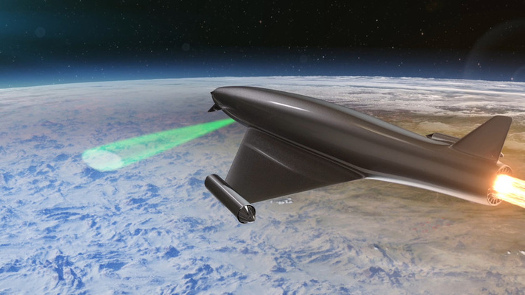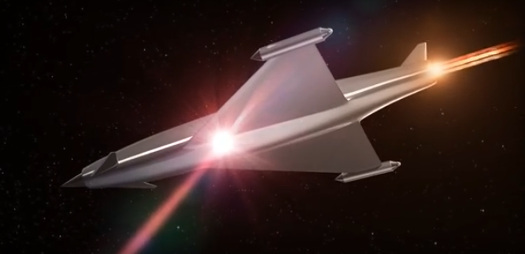 |
| January 24, 2017 | Volume 13 Issue 03 |
Designfax weekly eMagazine
Archives
Partners
Manufacturing Center
Product Spotlight
Modern Applications News
Metalworking Ideas For
Today's Job Shops
Tooling and Production
Strategies for large
metalworking plants
Directed-energy atmospheric lens could revolutionize future battlefields

Within the next 50 years, scientists at BAE Systems believe that battlefield commanders could deploy a new type of directed energy laser and lens system, called a Laser Developed Atmospheric Lens, that is capable of enhancing commanders' ability to observe adversaries' activities over much greater distances than existing sensors.
At the same time, the lens could be used as a type of "deflector shield" to protect friendly aircraft, ships, land vehicles, and troops from incoming attacks by high-power laser weapons that could also become a reality in the same time period.
The Laser Developed Atmospheric Lens (LDAL) concept, developed by technologists at BAE's military aircraft facility in Warton, U.K., has been evaluated by the Science and Technology Facilities Council (STFC) Rutherford Appleton Laboratory and specialist optical sensors company LumOptica and is based on known science. It works by simulating naturally occurring phenomena and temporarily --and reversibly -- changes the Earth's atmosphere into lens-like structures to magnify or change the path of electromagnetic waves such as light and radio signals.

LDAL is a complex and innovative concept that copies two existing effects in nature: the reflective properties of the ionosphere and desert mirages. The ionosphere occurs at a very high altitude and is a naturally occurring layer of the Earth's atmosphere that can be reflective to radio waves -- for example, it results in listeners being able to tune in to radio stations that are many thousands of miles away. The radio signals bounce off the ionosphere, allowing them to travel very long distances through the air and over the Earth's surface. The desert mirage provides the illusion of a distant lake in the hot desert. This is because the light from the blue sky is "bent" or refracted by the hot air near the surface and into the vision of the person looking into the distance.
VIDEO: This atmospheric lens concept could revolutionize the future of battlefield observation. See it in action.
LDAL simulates both of these effects by using a high pulsed power laser system and exploiting a physics phenomena called the "Kerr Effect" to temporarily ionize or heat a small region of atmosphere in a structured way. Mirrors, glass lenses, and structures like Fresnel zone plates could all be replicated using the atmosphere, allowing the physics of refraction, reflection, and diffraction to be exploited. "We're able to incorporate emerging and disruptive technologies and evolve the landscape of potential military technologies in ways that, five or 10 years ago, many would never have dreamed possible," says Professor Nick Colosimo, BAE Systems' Futurist and Technologist.
BAE Systems has a portfolio of patents and patent applications covering approximately 2,000 inventions internationally. Earlier this year, the company unveiled two other futuristic technology concepts. One involved small Unmanned Air Vehicles (UAVs) customized to specific military operations that could be "grown" in large-scale labs through chemistry. The other centered around armed forces of the future using rapid-response aircraft equipped with engines capable of hypersonic speeds.
Source: BAE Systems
Published January 2017
Rate this article
View our terms of use and privacy policy
